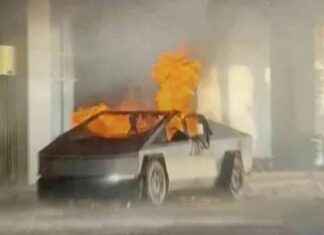On August 12, 1988, New York police discovered the body of 27-year-old Jean-Michel Basquiat in his studio on Great Jones Street in Manhattan. Nearby, says the agent’s report, a syringe, heroin and cocaine. Plus, he notes with astonishment, a plane ticket to Abidjan, the destination to which the painter was to fly six days later.
What did he intend to do in Ivory Coast? Attempt to detox, as he had tried to do the month before his death by staying away from the temptations of New York, Hawaii? Or for something else? These are the questions that the radio series in five episodes broadcast as a podcast on RFI from March 20 tries to answer. Written and told by Vladimir Cagnolari, directed by Adel Ittel El Madani, it is not a police investigation, but tells, by following this African thread, the short life and the immense work of Basquiat.
We will have the opportunity to come back to both of them when, in April, two events devoted to the artist open at the Fondation Louis Vuitton and the Philharmonie de Paris. The first explores his relations, notably pictorial, with Andy Warhol (they produced numerous works with four hands), the second, entitled “Basquiat Soundtracks” and imagined by the music critic Vincent Bessières, tells the lesser known part of his work, when he played clubs on the Lower East Side. Bessières is one of the speakers on the RFI show, and his description of New York musical circles at the time is fascinating.
A double return
But what was Basquiat going to do in Africa? It was in fact a double comeback: the only black of his generation to break through in New York to become a world star, erecting the status of heroes in his paintings the great African-American names in sport or music , Basquiat had a very strong relationship to negritude as Aimé Césaire defined it: “The simple recognition of being black, and the acceptance of this fact, of our destiny as black people, of our history and of our culture. This in a profoundly racist society…
The Ivory Coast, he had gone there for the first time, in 1986, with his Swiss dealer Bruno Bischofberger, the same one who had encouraged four-handed work with Warhol. Bischofberger had organized an exhibition of the artist at the French cultural center in Abidjan. Basquiat had found himself in a modern city, where blacks were in the majority and did not fear whites. First shock. The second is the journey he then made in the hinterland. First in the Korhogo region, in the north, mainly populated by Senoufos. There, no concrete buildings but clay huts, and a strong tradition of fabric painting.
But also very strong religious practices, which remind the artist of the voodoo cults that his father knew in Haiti, where he is from. Korhogo has, among other things, a fetish market, where people who want to ward off bad luck come to stock up. Basquiat discovers a new pantheon there, which he will quickly integrate into his paintings, such as a mask of a crocodile god or the figure of Exu, a Yoruba god. He will also make a trip to the island of Tiagba, where he seems to have found a certain serenity. And will paint, on his return to New York, a large painting entitled To Repel Ghosts. A way to exorcise his own demons, which was unfortunately insufficient.






